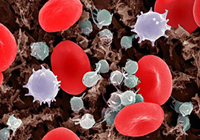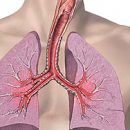Deciphering analyzes for human papilloma virus; Methods for identifying the pathogen, interpretation of the results obtained.
Content
Analyzes for human papilloma virus
Infection of a person's papilloma virus can be suspected already at the inspection phase. However, without confirming the tests, the doctor is not entitled to diagnose.
There are two research methods that reveal the papilloma virus:
- polymerase chain reaction;
- Digene test.
Polymerase chain reaction: the essence of the method
The polymerase chain reaction is produced in a bioreactor-amplifier, in which repeated self-treatment of the human papilloma virus (HPV) occurs under the influence of enzymes. As a result, its concentration becomes so big that it can be detected by modern methods.
For the study, venous blood is taken from which serum is isolated. The result is recorded on a special form on the simplest principle: the virus is either detected or not.
Digene test: essence of the method

Digene test — The most sensitive method of research.
To explore the epithelium scales obtained from:
- Ureyeing Canal,
- cervical cervix,
- Vagina.
During analysis, the material is subjected to processing with a reagent containing the so-called RNA probe, sensitive only to the human papilloma virus. In the presence of the pathogen in the test preparation, the viral DNA and RNA probe is bonding (this is called hybridization). The resulting hybrid is connected with labeled antibodies and is exposed to research.
Result method — Detection of the virus taken
Material. The test can be either positive if HPV is either negative if it is not. You can also determine the concentration of viral particles — Important to predict the probability of cervical cancer indicator.









